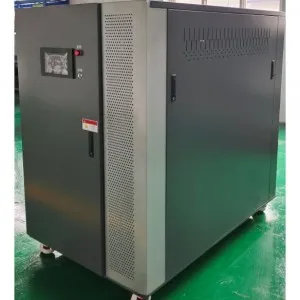- Afrikaans
- Albanian
- Amharic
- Arabic
- Armenian
- Azerbaijani
- Basque
- Belarusian
- Bengali
- Bosnian
- Bulgarian
- Catalan
- Cebuano
- China
- China (Taiwan)
- Corsican
- Croatian
- Czech
- Danish
- Dutch
- English
- Esperanto
- Estonian
- Finnish
- French
- Frisian
- Galician
- Georgian
- German
- Greek
- Gujarati
- Haitian Creole
- hausa
- hawaiian
- Hebrew
- Hindi
- Miao
- Hungarian
- Icelandic
- igbo
- Indonesian
- irish
- Italian
- Japanese
- Javanese
- Kannada
- kazakh
- Khmer
- Rwandese
- Korean
- Kurdish
- Kyrgyz
- Lao
- Latin
- Latvian
- Lithuanian
- Luxembourgish
- Macedonian
- Malgashi
- Malay
- Malayalam
- Maltese
- Maori
- Marathi
- Mongolian
- Myanmar
- Nepali
- Norwegian
- Norwegian
- Occitan
- Pashto
- Persian
- Polish
- Portuguese
- Punjabi
- Romanian
- Russian
- Samoan
- Scottish Gaelic
- Serbian
- Sesotho
- Shona
- Sindhi
- Sinhala
- Slovak
- Slovenian
- Somali
- Spanish
- Sundanese
- Swahili
- Swedish
- Tagalog
- Tajik
- Tamil
- Tatar
- Telugu
- Thai
- Turkish
- Turkmen
- Ukrainian
- Urdu
- Uighur
- Uzbek
- Vietnamese
- Welsh
- Bantu
- Yiddish
- Yoruba
- Zulu
መስከ . 29, 2024 02:25 Back to list
Benefits of Choosing an Investment Casting Factory for Precision Manufacturing Solutions
Investment Casting A Comprehensive Overview of the Factory Process
Investment casting, also known as lost-wax casting, is a sophisticated manufacturing process that creates intricate metal parts with exceptional precision. This method has gained widespread popularity in various industries, including aerospace, automotive, and medical, due to its ability to produce components with complex geometries and fine details. An investment casting factory is where this transformative process takes place, combining traditional craftsmanship with advanced technology.
The investment casting process begins with the creation of a wax pattern that mimics the final product's shape. These patterns are meticulously crafted, allowing for high accuracy and fidelity to the desired specifications. Once the wax patterns are made, they are assembled onto a gating system, also made of wax, which facilitates the pouring of molten metal into the mold. This assembly is then coated with a ceramic shell, achieved through a process of dipping and sand application. The thickness of this shell is crucial, as it must withstand the temperature of molten metal while maintaining its structural integrity.
After the shell has cured, the next step involves melting out the wax patterns. This is typically done in an autoclave or an oven, where the heat melts the wax, leaving behind hollow ceramic molds. These molds are then preheated to a specific temperature to ensure optimal pouring conditions and to minimize thermal shock when the molten metal is introduced.
The heart of the investment casting factory is the pouring process. High-quality alloys, such as stainless steel, aluminum, or titanium, are melted in a furnace and then poured into the prepared molds. The design of the gating system is crucial here, as it governs the flow of molten metal, ensuring that it fills the cavities of the mold uniformly without trapping air bubbles. This meticulous attention to detail is what allows investment casting to achieve its high levels of precision.
investment casting factory

Once the metal has cooled and solidified, the next phase is the removal of the ceramic shell. This is typically achieved through mechanical vibration or water jet techniques, revealing the cast metal components. After shell removal, the parts are cleaned and inspected for any defects. Additional finishing processes such as grinding, polishing, or machining may be employed to achieve the desired surface finish and dimensional accuracy.
In an investment casting factory, quality control is paramount. Various testing methods, such as X-ray inspection or ultrasonic testing, are used to ensure that the cast parts meet stringent industry standards. This emphasis on quality not only enhances the performance and reliability of the components but also helps build trust with clients who depend on these parts for their operations.
The benefits of investment casting are manifold. Its ability to produce lightweight components without compromising strength makes it an ideal choice for industries where performance is critical. Moreover, the reduced need for machining translates to cost savings and shorter lead times, making it an efficient choice for both prototypes and large-scale production runs.
In conclusion, investment casting is a sophisticated process that combines art and science. Within an investment casting factory, skilled artisans and advanced technology work hand in hand to create high-quality metal components that serve vital roles across various industries. Whether it’s the aerospace sector requiring precision-engineered parts or the automotive industry needing durable components, investment casting remains an invaluable manufacturing method that continues to evolve with technological advancements.
-
8mm Thin-Walled Cast Steel Manhole Cover Pallet Bottom Ring | Durable
NewsAug.04,2025
-
Premium Cast Iron Water Main Pipe: Durable, Corrosion-Resistant
NewsAug.03,2025
-
Durable Cast Iron Water Mains | AI-Optimized Systems
NewsAug.02,2025
-
High-Efficiency Propane Boiler for Baseboard Heat | Save Energy
NewsAug.01,2025
-
Premium Source Suppliers for Various Gray Iron Castings
NewsJul.31,2025
-
Durable Cast Iron Water Main Pipes | Long-Lasting
NewsJul.31,2025


